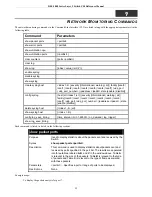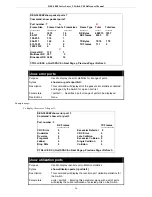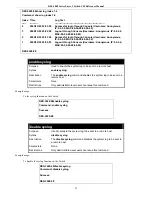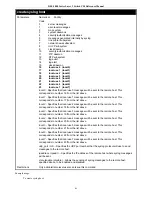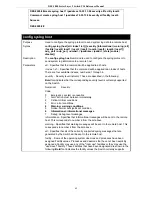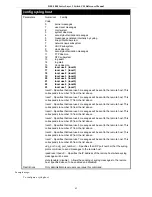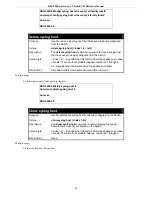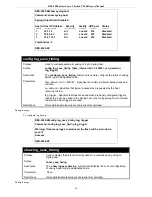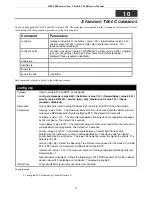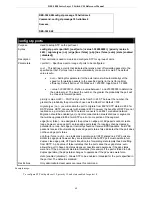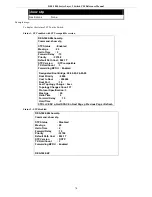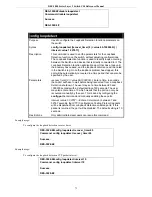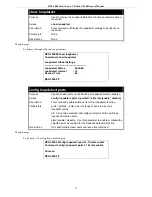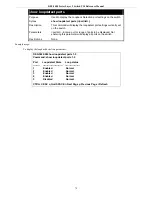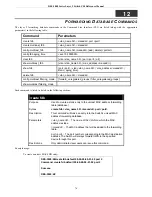
DES-3000 Series Layer 2 Switch CLI Reference Manual
create syslog host
Parameters
Numerical Facility
Code
0 kernel messages
1 user-level messages
2 mail system
3 system daemons
4 security/authorization messages
5 messages generated internally by syslog
6 line printer subsystem
7 network news subsystem
8 UUCP subsystem
9 clock daemon
10 security/authorization messages
11 FTP daemon
12 NTP subsystem
13 log audit
14 log alert
15 clock daemon
16 local use 0 (local0)
17 local use 1 (local1)
18 local use 2 (local2)
19 local use 3 (local3)
20 local use 4 (local4)
21 local use 5 (local5)
22 local use 6 (local6)
23 local use 7 (local7)
local0
−
Specifies that local use 0 messages will be sent to the remote host. This
corresponds to number 16 from the list above.
local1
−
Specifies that local use 1 messages will be sent to the remote host. This
corresponds to number 17 from the list above.
local2
−
Specifies that local use 2 messages will be sent to the remote host. This
corresponds to number 18 from the list above.
local3
−
Specifies that local use 3 messages will be sent to the remote host. This
corresponds to number 19 from the list above.
local4
−
Specifies that local use 4 messages will be sent to the remote host. This
corresponds to number 20 from the list above.
local5
−
Specifies that local use 5 messages will be sent to the remote host. This
corresponds to number 21 from the list above.
local6
−
Specifies that local use 6 messages will be sent to the remote host. This
corresponds to number 22 from the list above.
local7
−
Specifies that local use 7 messages will be sent to the remote host. This
corresponds to number 23 from the list above.
udp_port <int>
−
Specifies the UDP port number that the syslog protocol will use to send
messages to the remote host.
ipaddress <ipaddr>
−
Specifies the IP address of the remote host where syslog messages
will be sent.
state [enable | disable]
−
Allows the sending of syslog messages to the remote host,
specified above, to be enabled and disabled.
Restrictions Only
administrator-level users can issue this command.
Example usage:
To create syslog host:
61









